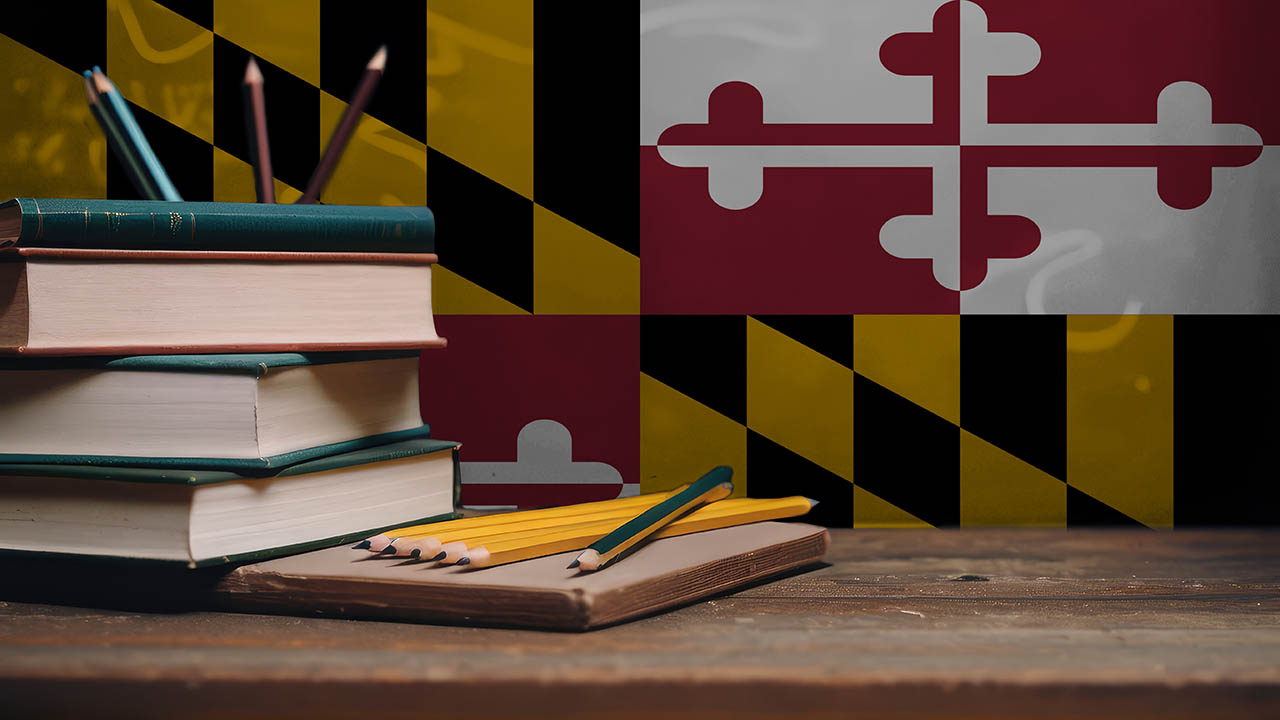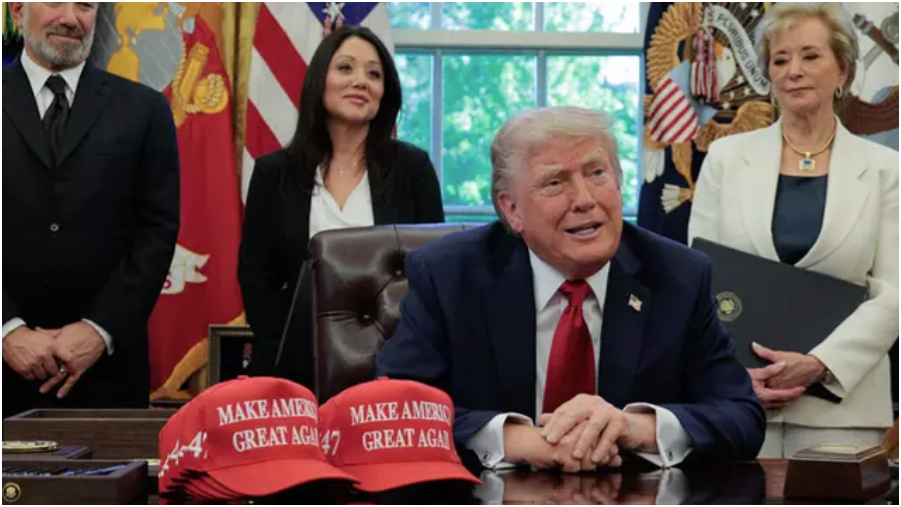

Too Much Government, Too Little Reality: The Blueprint’s Empty Promises Are Catching Up
From the moment the Blueprint for Maryland’s Future was introduced, I expressed concern about its feasibility. While the goals of the Blueprint are noble (a world-class education for every student in Maryland) the reality is, it is unrealistic, and everyone knows it. Everyone knew it then. Ambitious plans often falter when they deplete resources available to execute them, and this is exactly what we’re witnessing today.
Governor Wes Moore recently acknowledged that, while progress has been made under the Blueprint, significant adjustments are necessary. He highlighted the well-known teacher shortage as a critical barrier. However, the teacher pipeline issue is only one symptom of a much larger problem: the Blueprint demands far more than most jurisdictions can realistically provide, particularly when they are already struggling to meet basic operational needs.
Governor Moore plans to address the teacher shortage by introducing legislation in 2025 to build on the Educator Shortage Act. His proposed solution aims to strengthen teacher recruitment and retention pipelines, which is sorely needed. Current statistics show the depth of the crisis:
- 4% of teacher positions remain unfilled, leaving roughly 1,600 classrooms without experienced educators.
- Approximately 6,000 teachers are working under provisional certifications, meaning they lack the full licensure and training expected of their roles.
Governor Moore was candid when he stated, “If we don’t get a high-quality, high-trained, and dedicated teacher in every classroom, the Blueprint itself is bound to fail.” While I agree with his assessment, this acknowledgment only reinforces a central problem with the Blueprint: it sets expectations that cannot be met given the current conditions.
Collaborative Planning Time: Another Unrealistic Expectation
One of the provisions of the Blueprint is the requirement for collaborative planning time for teachers. The intention (to give educators time to plan and collaborate) is admirable, but its implementation has proven impractical. As a former scheduler, no one understands this more than I do, which is a main reason I was opposed at the start. In a perfect world, teachers should all have collaborative planning time, but it is much more complicated.
There are several levels of this collaborative planning time, and it depends on the structure of the school. There is common planning based on grade level, where teachers of the same grade of students all have planning at the same time. There is department level planning where teachers of the same department (math, science, social studies, etc.) all have planning at the same time. There is also team planning time where all teachers of a team who teach the same students have planning at the same time. A team might consist of a math teacher, a science teacher, a language arts teacher, and a social studies teacher. This grade level approach is common in middle schools.
All these models require additional resources. Simply put, when the teachers have this common planning time, the students must be somewhere else. That somewhere else requires a teacher of a different subject who is not a part of the grade, department, or team. Apparently, they have just discovered that this is incredibly difficult and requires significant investment in additional staffing.
Governor Moore now proposes a pause on this requirement, citing the need for 15,000 more teachers to meet the mandate effectively. I am beside myself that they have just figured this out.
To keep teachers in classrooms while addressing staffing shortages, Moore is proposing short-term grants to allow school districts to test collaborative planning models. There is nothing to test. They have all been tested before. There are a finite number of options. Scheduling is a black and white numbers game. If there are 800 students in a school, at every point in the school day, there must be teachers on duty supervising 800 students: period. To maintain an average of about 25 students per class, there must be 32 teachers on duty teaching. No amount of testing or studying will change that.
Common planning time will work when properly designed; however, it is limited. This all highlights how the Blueprint’s vision does not align with current realities.
Transportation Shortages: The Overlooked Crisis
Beyond teachers, many jurisdictions in Maryland are facing another critical resource challenge: transportation. School systems across the state are struggling to hire and retain bus drivers. Routes are delayed, students are late to school, and districts are often forced to consolidate routes in ways that inconvenience families and compromise safety.
Yet, the Blueprint continues to add pressure to systems already stretched thin. By demanding additional staffing, new programs, and expanded services, the Blueprint inadvertently exacerbates these operational shortages. If a district cannot reliably transport students to school, how can it possibly deliver on the ambitious programs outlined in the Blueprint?
Governor Moore’s efforts to refine the Blueprint come at a time when Maryland faces a $2.7 billion deficit for the next budget year. Long-term projections are even more alarming:
- A $2 billion shortfall is expected by fiscal year 2028.
- By fiscal year 2030, the deficit grows to $3.2 billion.
Kalman R. Hettleman, a respected education policy analyst, argues that the Blueprint was underfunded from the start. He calls for a reprioritization of funding to better support class sizes, struggling learners, and mental health services. I would take his argument a step further: we need to reassess whether the Blueprint’s ambitions are even achievable under the current financial and operational realities.
At its core, the Blueprint represents a vision of education that is overly dependent on government intervention. It assumes that statewide mandates can solve deeply local problems, from teacher shortages to transportation gaps. The reality is far different. Jurisdictions across Maryland face unique challenges that require tailored solutions, not one-size-fits-all mandates.
I have been against the Blueprint from the beginning for this exact reason. It is too much government, and it is impossible to deliver. By setting unrealistic expectations, the Blueprint risks disillusioning educators, administrators, and families alike.
Where Do We Go from Here?
Governor Moore’s willingness to acknowledge the Blueprint’s flaws is a step in the right direction, but more than a pause is needed. We must:
- Reassess Priorities: Focus on foundational issues like staffing shortages, transportation, and manageable workloads for teachers.
- Empower Local Solutions: Allow jurisdictions to address their unique challenges without the burden of unattainable mandates.
- Re-evaluate Funding: Ensure that current funding priorities address the immediate needs of schools, students, and educators.
The Blueprint’s goals are aspirational, but aspiration alone does not improve outcomes. Maryland’s schools deserve a plan that is not only visionary but also realistic—one that empowers districts to succeed, rather than setting them up to fail.
Dig Deeper With Our Longreads
Newsletter Sign up to get our best longform features, investigations, and thought-provoking essays, in your inbox every Sunday.
The MEN was founded by John Huber in the fall of 2020. It was founded to provide a platform for expert opinion and commentary on current issues that directly or indirectly affect education. All opinions are valued and accepted providing they are expressed in a professional manner. The Maryland Education Network consists of Blogs, Videos, and other interaction among the K-12 community.










